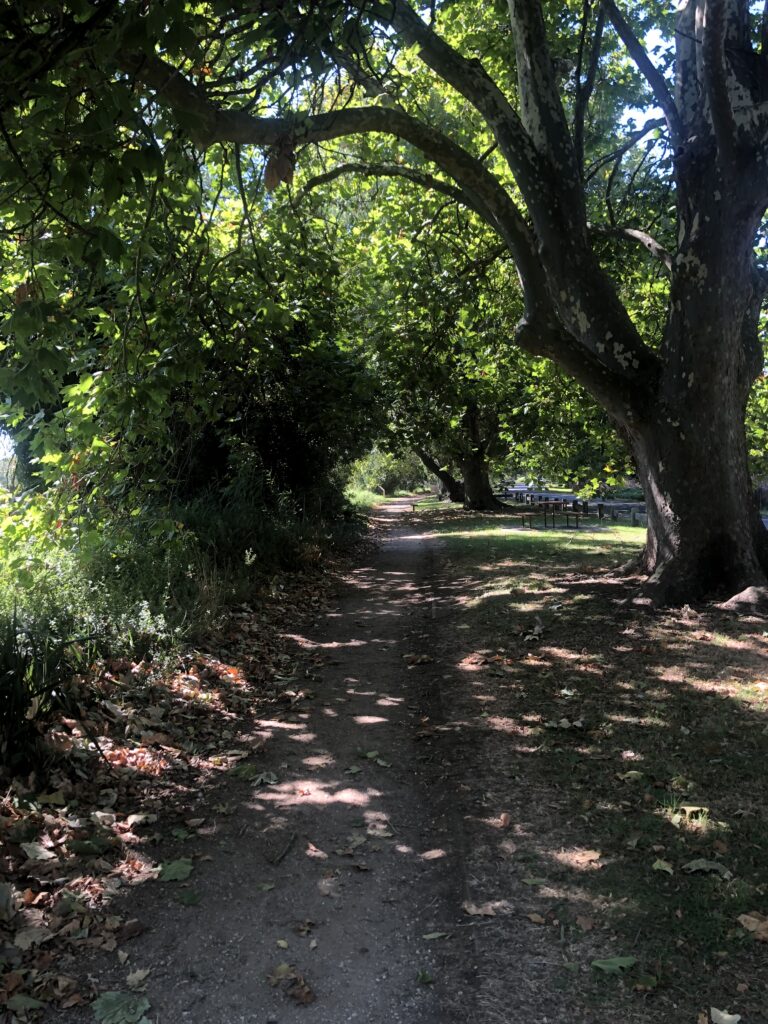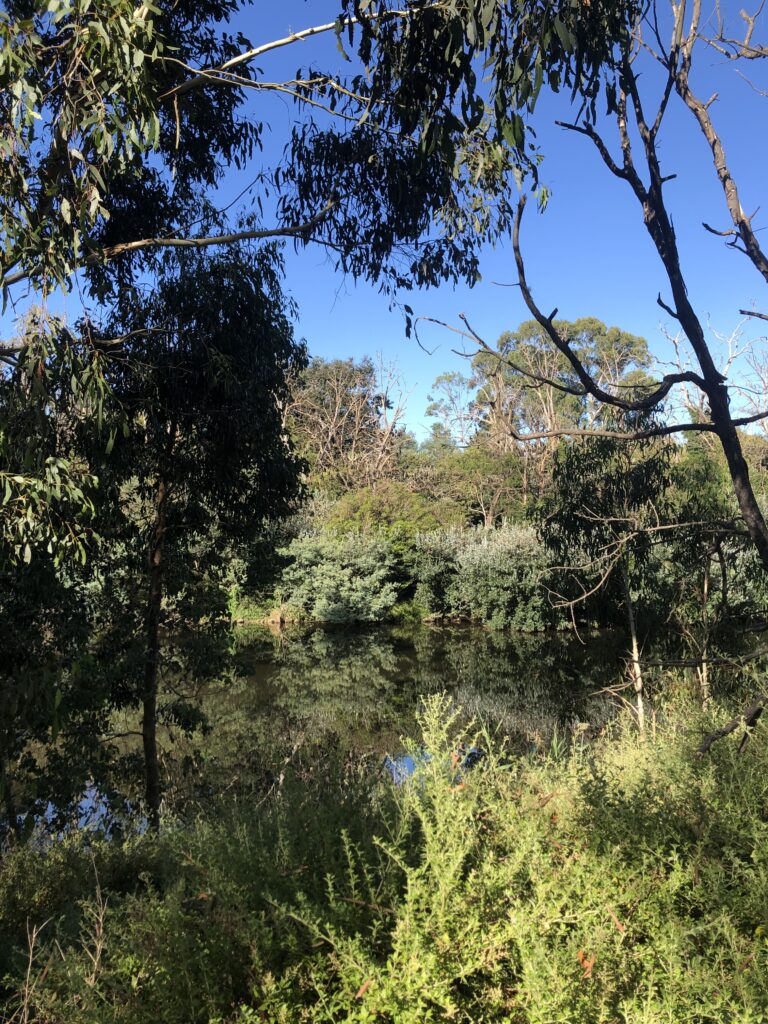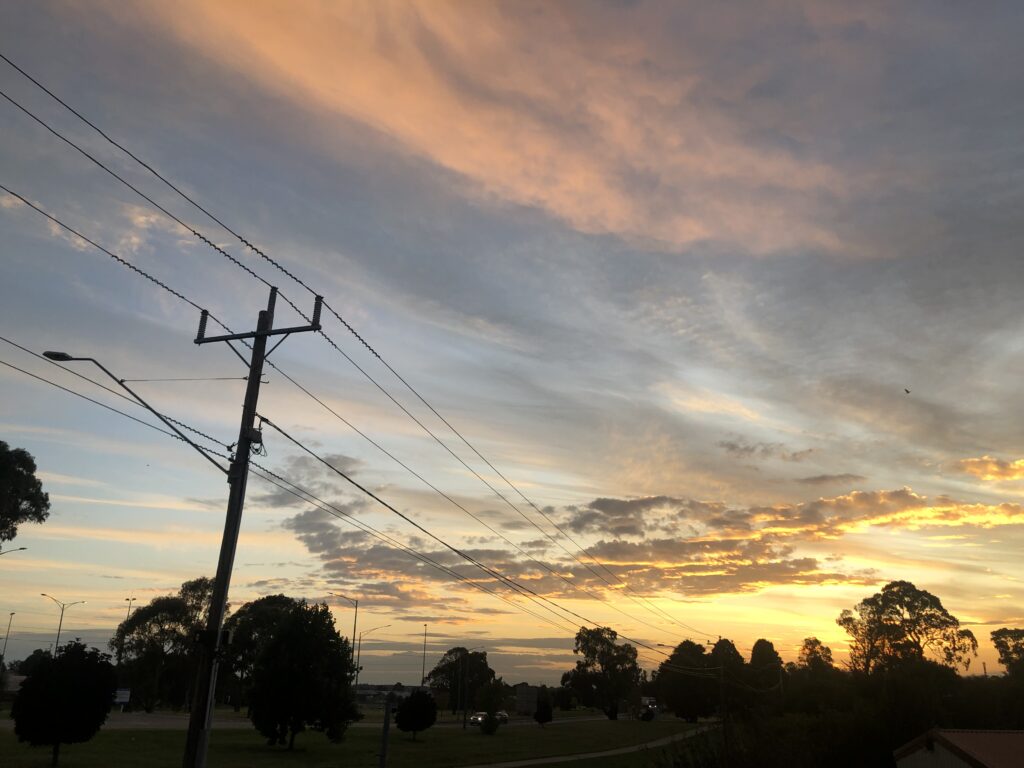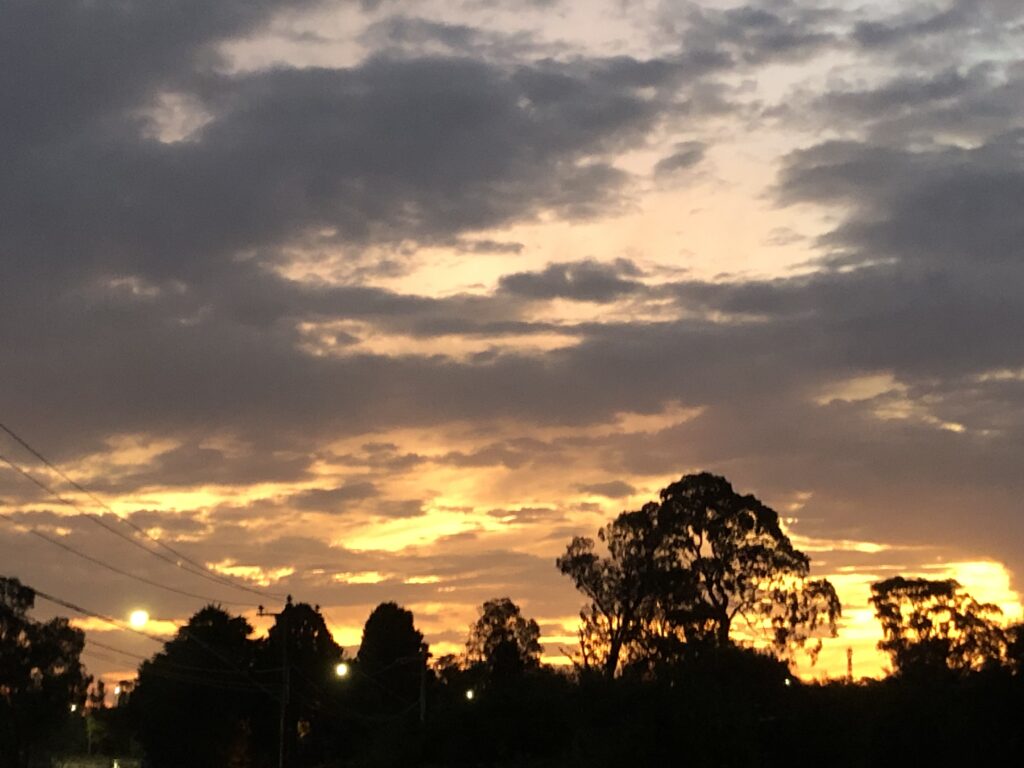“The strength of ones mind can carry you beyond physical barriers and drive you to new goals. Discipline is the foundation of mental fitness.”
Month: February 2023 (Page 1 of 2)
Francis Collie
“Tracks and signs are the letters, trails are the words and sentences. Nature is the book.”
Francis Collie must have delivered one of the most entertaining talks at the ITS on how to decipher and present a track to another person, using story telling.

My favorite quote ” Who doesn’t carry tarps and bags of sand to make track traps while on holiday . Doesn’t everyone do that, its normal isn’t it.” David Wege
Hopefully more Aussies will join next year. I found it very interesting listening to speakers that have had experience over many years reading tracks and deciphering them.

Ive not what you’d ever call a Birdie Person. Unless you could eat a bird I wasn’t really interested. However after getting into Bird Language my view point has changed. Now watching presentations on bird tracks and seeing that people have taken it to a level where they can tell the difference between pigeon breeds comparing that to doves tracks amazes me. A pigeon track has always been a pigeon track to me. the presentations are opening up whole new ways of me looking at the tracks I find around me. This is why I’m drawn to Bushcraft. There are so many subjects to learn , no time to ever get bored. Im always learning something new.

Speakers
• David Wege – Bird tracks
• Oded Davidovich – Gaits and gait analysis
• Ulrike Quartier – Trailing and education
• Sören Decraene – Bone identification
• Diliana Welink – Sign of invertebrates
• Larissa Slaney and Fredrick Kistner – It’s otterly confusing
• Francis Collie – Once upon a track
• Lisa Fenton – Tracking in the Ethnosphere
• Bob Cowley – Slugs slide and snails sneak
• Jose Galan – The importance of modern trackers in support of archaeology, paleontology, and human evolution
• René Nauta – Feeding remains
• Thomas Baffault – Tracking as a rewilding skill
• Asaf Ben David – when gerbil and rat meet
• Kim Cabrera – Tracking to improve camera placement
• Michal Králik – Tracking and monitoring migration
• Dan Puplett – Mustelid tracks and sign
• Toni Romani – Applications for tracking
• Panel – Tracking questions answered by Casey McFarland, Kersey Lawrence, Preston Taylor, John Rhyder and Rene Nauta
Invertebrates Diliana Welink. I never thought Id be tracking snails, slugs and spider excrement but I see the sign every where. I now look up when I see dark dotes left on flat surfaces and know there are spiders above me. Mushrooming in the forest I see traces of bite marks in mushrooms and can now tell the difference between a mouse or rat taking a nibble compared to a slug or snail.





With Rewilding, Nature Connection and Resiliency movements taking hold, I am wondering why the name Gary Snyder has never been mentioned. I came across the name today watching you-tube clips on how to build an A frame shelter of all things with a quote of his being used as the introduction and became intrigued. Several books listed below interested me, particularly Practice in the Wild.
Exert from Practice of the Wild
“The sky above the strip mall hung low and grey, which didn’t help the look of things. With the snow melting, the parking lot was filled with dirty cars and wet trash. People spilled into and out of the stores: a Subway; a Starbucks; a supermarket whose name I forget.
As I stood there, I was struck by how we humans are a strange lot, trading prairie, forest, fields and wetlands for these terrains of tar and concrete. It left me with a question. Why exactly is the contrast between these worlds so sad? What, specifically, is it that makes the parking lot seem so lost compared with the forest of trees or the field it used to be?”
Gary Snyder is an American poet (originally, often associated with the Beat Generation), essayist, lecturer, and environmental activist. Snyder is a winner of a Pulitzer Prize for Poetry. Since the 1970s, he has frequently been described as the ‘laureate of Deep Ecology’. From the 1950s on, he has published travel-journals and essays from time to time. His work in his various roles reflects his immersion in both Buddhist spirituality and nature. Snyder has also translated literature into English from ancient Chinese and modern Japanese. As a social critic, Snyder has much in common with Lewis Mumford, Aldous Huxley, Karl Hess, Aldo Leopold, and Karl Polanyi. Snyder was for many years on the faculty of the University of California, Davis, and for a time served on the California Arts Council.
Practice of the wild
The nine captivatingly meditative essays in The Practice of the Wild display the deep understanding and wide erudition of Gary Snyder in the ways of Buddhist belief, wildness, wildlife, and the world. These essays, first published in 1990, stand as the mature centerpiece of Snyder’s work and thought, and this profound collection is widely accepted as one of the central texts on wilderness and the interaction of nature and culture. As the Library Journal affirmed, This is an important book for anyone interested in the ethical interrelationships of things, places, and people, and it is a book that is not just read but taken in.”
Turtle Island
Describing the title of his collection of poetry and occasional prose pieces, Gary Snyder writes in his introductory note that Turtle Island is “the old/new name for the continent, based on many creation myths of the people who have been here for millennia, and reapplied by some of them to ‘North America’ in recent years.” The nearly five dozen poems in the book range from the lucid, lyrical, almost mystical to the mytho-biotic, while a few are frankly political. All, however, share a common vision: a rediscovery of this land, and the ways by which we might become natives of the place, ceasing to think and act (after all these centuries) as newcomers and invaders.
Mountains and Rivers Without End
When this landmark work was first published, Gary Snyder was honored with the Bollingen Poetry Prize, the Robert Kirsch Lifetime Achievement Award, and the Orion Societys John Hay Award. Publishers Weekly named Mountains and Rivers Without End one of the best books of 1996. On April 8, 1956, Gary Snyder began work on a long poem entitled Mountains and Rives Without End. Initially inspired by East Asian landscape painting and his own experience within a chaotic universe where everything is in place, Snyders vision was further stimulated by Asian art and drama, Gaia history, Native American performance and storytelling, the practice of Zen Buddhism, and the varied landscapes of Japan, California, Alaska, Australia, China, and Taiwan.While a few individual sections of the poem have been published in literary magazines and a small bound collection, Snyders ardent fans have waited patiently through the past forty years for the completion of Mountains and Rivers Without End. The entire work appears for the first time in this volume.Traveling beyond its origins in the Western tradition of Whitman, Pound, and Williams, Mountains and Rivers is an epic of geology, prehistory, and planetary
The Back Country
This collection is made up of four sections: “Far West”—poems of the Western mountain country where, as a young man. Gary Snyder worked as a logger and forest ranger; “Far East”—poems written between 1956 and 1964 in Japan where he studied Zen at the monastery in Kyoto; “Kali”—poems inspired by a visit to India and his reading of Indian religious texts, particularly those of Shivaism and Tibetan Buddhism; and “Back”—poems done on his return to this country in 1964 which look again at our West with the eyes of India and Japan. The book concludes with a group of translations of the Japanese poet Miyazawa Kenji (1896-1933), with whose work Snyder feels a close affinity. The title, The Back Country, has three major associations; wilderness. the “backward” countries, and the “back country” of the mind with its levels of being in the unconscious.
https://en.wikipedia.org/wiki/Gary_Snyder
https://www.theparisreview.org/blog/2020/09/10/the-nature-of-gary-snyder/
https://www.newyorker.com/magazine/2008/10/20/zen-master
The Practice of the Wild
https://www.npr.org/sections/13.7/2017/02/21/516394536/the-wilderness-vs-the-wildness-about-us
Walking is the great adventure, the first meditation, a practice of heartiness and soul primary to humankind. Walking is the exact balance between spirit and humility.
Gary Snyder
Quote from Practice in the Wild
“The blue mountains are constantly walking.” Dōgen is quoting the Chan master Furong. — “If you doubt mountains walking you do not know your own walking.”
— Dōgen is not concerned with “sacred mountains” – or pilgrimages, or spirit allies, or wilderness as some special quality. His mountains and streams are the processes of this earth, all of existence, process, essence, action, absence; they roll being and non-being together. They are what we are, we are what they are. For those who would see directly into essential nature, the idea of the sacred is a delusion and an obstruction: it diverts us from seeing what is before our eyes: plain thusness. Roots, stems, and branches are all equally scratchy. No hierarchy, no equality. No occult and exoteric, no gifted kids and slow achievers. No wild and tame, no bound or free, no natural and artificial. Each totally its own frail self. Even though connected all which ways; even because connected all which ways. This, thusness, is the nature of the nature of nature. The wild in wild.
So the blue mountains walk to the kitchen and back to the shop, to the desk, to the stove. We sit on the park bench and let the wind and rain drench us. The blue mountains walk out to put another coin in the parking meter, and go down to the 7-Eleven. The blue mountains march out of the sea, shoulder the sky for a while, and slip back to into the waters.”
― Gary Snyder, Practice of the Wild
My Sit Spot has been in my front yard due to my leg injury and its been an eye opening experience because the birds have gotten used to me and now come out when I leave the front door to welcome me. However with the sit spot challenge in March I wanted to try something different for the week and find another place where I could sit for an hour or two and not be disturbed by others and today I found a nice little seat by the river where a colony of finches and fruit bats live and thought this would make a great place for my challenge week.
Things to look for in a sit spot:
1) Near wild nature; surrounded by native plants of different types and sizes,which provide shelter for the animals who live there.
2) A transition zone ;This is a place where one type of landscape meets another.
3) Close to a natural water source
4) Private
5) A realistic distance from home
Ive been building up my knee on the exercise bike at the gym and finally got up the courage to try out the new electric motor on my mountain bike and since then have been out every day building up the distance and strength in my legs. Whenever my knee has too much I just motor home. Today I managed both sides of the river track for the first time. I cant handle being inside all the time. Getting out every day resets your mind. It just means pain killers throughout the day when the knee seizes up afterwoods, however its becoming less and less.











The baby Magpies have actually started training us. They let us know when the fountain needs to be turned on for them to water, and one in particular yesterday was sitting in the crosspiece of the hand rail making an unusual noise. It was half companion call half chortling which I hadn’t heard before and it wouldn’t leave . I stood there for some time recording it. Then I figured out it wanted feeding. I had to cut up some left over lamb sausage into small pieces and leave out for them.
I believe it took longer to take the pictures and write this up than to actually make the bow. Took a week for the poles to arrive from interstate and still cheaper than purchasing locally.
After testing the springiness I decided to go with the double tip design using the 6.9mm poles. Also easier than using a grinder on the tip to form a nocking point for the string.
Ducked tape up the joins and whip finished over the top with bank line. The bow came to between 12 to 15 LBS draw weight. I’m going to wrap some more duct tape around the bundle to try and stiffen up the limbs more to try and get at-least 20 LBS draw weight out of it. Might just be enough to take a rabbit at short range.
Filled up an afternoon and its something to do in the front yard after a few beers in the later in the day. Ill try and find some river cane in a few weeks when it grows higher to get thumb thickness cuttings and do a more bushcrafty version.









The Magpie is the dominant bird within the boundary of my sit spot. They’re coming more and more often when they see us. Several parents are bringing their young to feed and water here. There are 5 communication calls:
Songs — the signature sounds they use to defend territory and attract mates.
Companion calls — the sounds birds use to communicate with each other during feeding or travel
Juvenile begging — the “I’m hungry!” sounds that chicks and young birds make to get adults to feed them
Aggression — the sounds made by birds defending their territory against other intruding birds
Alarm — the sound made when expressing alarm about a threat.
Ive been reading “What the Robin knows” by Jon young and picked out the magpie to study as that’s the bird mostly available to me. After reading up on them Ive found out its actually the male that is taking care of the young and not the female and started to pick out the different calls. Songs and Juvenile begging have been quite easy. Today I picked out the companion call. The mother used an aggression sound on the young the other day however I still haven’t picked out an alarm call. They just seem to take off if something disturbs them.


Magpies live to 25 years old. I did a fishing course over 20 years ago in a local man made lake area and the primary fish we were targeting were Bream. The instructor told us that the Bream grow one centimeter for every year making a legal fish to catch and keep was 32 cm making it 32 years old. Older than I was when I did the course. I haven’t been able to eat a Bream since. Knowing how long an animal live for also changes the way you look at them.
I have also been watching where they fly to after leaving here and have a good idea where their nest is located. The field across the road is near a water way with waist high grass. I haven’t been able to wear shoes for close to a year. I did go into this area once after the local council slashed it using two crutches and it knocked the crap out of me . Very uneven ground. I’m mainly concerned about the tiger snakes in this area when I cant wear heavy shoes, very aggressive species.
What I’m finding now , is when the birds start their singing in the area. I’m now picking out OHHH that’s an alarm but don’t know the bird, or that’s a companion call. I’m picking them all out. My mind starts to become overwhelmed with the amount of communication that is going on around me. The songs are no longer background noise or lovely overtures but gossiping to one another.
Magpies Mama
Facts
Comunicating with Wild Birds Articles
http://www.wingedhearts.org/communicating-with-wild-birds
Magpie Sounds
Magpie Whisperer
You learn something everyday. Well at-least you should aim at learning something new every week. This week on the second session of Bird language with Andrew Turbill we found out that the worlds song birds actually originated with Antarctica, New Zealand and Australia and that Antarctica under all the ice and snow is covered with fossilized beech trees. Its hard to imagine Australia covered with trees and Forrest unlike the desert it is today. The song birds island hopped from Australia to Indonesia when the continental drift brought the land masses close enough to island hop approximately 23 million years ago.

The Bird species in Australia are much older in heritage than the ones in the northern hemisphere and now have more in common with the lyrebirds here than the same looking birds in the opposing hemisphere.
https://en.wikipedia.org/wiki/Passerine
https://pursuit.unimelb.edu.au/articles/fossil-forests-under-antarctic-ice
What gave me the idea for this project was a house mate making a Redneck recurve bow but you have to find a white fiberglass tree in the middle of no where to make one or in his case the local fodder store. I was thinking about doing the version using tent poles but wanted to make a more bushcrafty version but there weren’t many materials around here to use , so have ended up using 3 Oztrail replacement pole kits for an improvised bow.
I read Hatchet by Gary Paulsen many years ago and the main character Brian made a bow in the wilderness by carving it with an axe out of one piece of material. Using three or more pieces of thinner material seems much easier to do in a survival situation. I have made a one piece bow and it took all day and required backing to make it strong enough. Atlatls or bundle bows are much more expedient to improvise in a survival situation.
Ill be endeavoring to make a single tip bow. The difference between the single, double and raft methods are below in the second clip link. The double has less chance of snapping the tip than on a single and is far easier to attach a bow string without carving or having to build up a notch.
Bundle Bow Making
Bundle Bow Designs. Single Tip, Double Tip, Raft
Tent Pole bow
Bowyers Knot
Reverse Twist Bow String
6.9mm Pole kit
Here are several months of sunsets from the same position.















